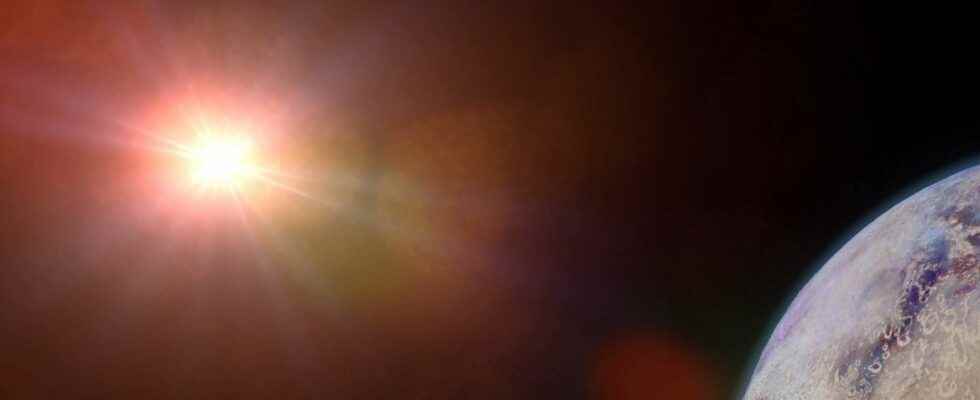Researchers report in a study accepted into the journal Astronomy & Astrophysics, discovery by the space telescope tess of two exoplanets strangely similar to Earth. Named HD 260655b and HD 260655c, these two super-Earths orbit around a dwarf star red, HD 260655, 33 light years away. A distance that makes this system “the fourth closest known multiplanetary system after HD 219134, LTT 1445 A and AU Mic”details the study.
Two new, uninhabitable super-Earths
The space telescope Tess (Transiting Exoplanet Survey Satellite) of NASA applies since 2018 to detect exoplanets associated with the bright stars closest to us. To do this, he uses the transit method: it consists of targeting a star for a sufficient period of time to observe variations in brightness periodic, due to the passage of a planet in front of its host star. Using this, scientists can then trace the diameter of the planet, using the intensity of the dip in brightness and the size of its star.
In the case of the red dwarf HD 260655, much smaller than the Sun but nevertheless bright enough, the researchers also determined its mass thanks to the radial velocity method. It makes it possible to deduce the gravitational influence which is exerted on the star, by observing periodic variations in its luminous spectrum: when the radial velocity of the star changes, the lines ofabsorption shift. “Every planet in orbit around a star is going to have a small gravitational pull on its star”explains Michelle Kunimoto, post-doctoral researcher at MIT (Massachusetts Institute of Technology) and who participated in the discovery of the two exoplanets. “What we are looking for is very light movement of this star which could indicate that a planetary mass object is shooting at it. »
From these data, it is possible to deduce the mass that causes this influence, therefore the mass of the exoplanet. Combined with the diameter, the researchers deduced the density of the two exoplanets: this being similar to that of the Earth, they very probably correspond to rocky planetsas Mercury, VenusEarth and March. With a mass and size close to that of the Earth, this makes them super-Earths. However, they turn out to be uninhabitable: with narrow orbits close to their star, the temperatures calculated by scientists reach 435°C for HD 260655b and 284°C for HD 260655c. “We consider this beach outside the habitable zone, too warm for any water liquid exists on the surface”explains Mr. Kunimoto.
Ideal candidates for an atmospheric study
But hope is not lost for the HD 260655 system: researchers estimate that it could house more than two exoplanets. “There could be more planets in the system”adds Avi Shporer, co-discoverer of these two rocky worlds and researcher at MIT. “There are many multiplanetary systems hosting five or six planets, especially around small stars like this. Hopefully we’ll find more, and we might be in the habitable zone. It is an optimistic thought. »
They could well soon be targeted by the James Webb telescopewhich will unveil its very first images on July 12. By their proximity and the luminosity of their star, “The two planets in this system are each considered among the best targets for atmospheric study”, explains Mr. Kunimoto. For now, the team has determined that if they have a atmosphereit is not extensive and consists mainly ofhydrogen. Being similar in density and size to Earth, the team further hopes to learn more about its formation through them.
Interested in what you just read?
